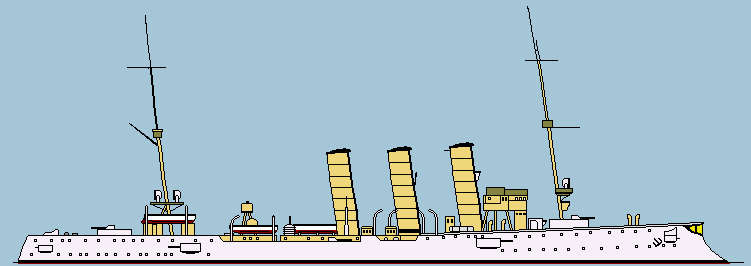With the small cruisers of the Bremen
class, the German navy started a tradition that would be typical for all following small cruisers and light cruisers of World War II: They were named after German towns. The class consisted of seven ships that did not differ very much from their predecessors, the Gazelle
class. One of the ships - the Lübeck
- was different in one important detail, for the first time, a turbine engine was installed on a small cruiser instead of the triple expansion engine that was typical for most ships of this time. While being very maneuverable ships, they took over quite a lot of water and started to roll heavily in stormy sears.
Despite not being modern ships at the outbreak of World War I, those ships were used intensively, several were lost and some of them even survived World War II - but not as combat ships anymore.
The Leipzig
was stationed at the Mexican west coast at the outbreak of the war and meet with the East Asian squadron in the Pacific. Together with the other ships of the squadron, the cruiser took part in the Battle at Coronell and was sunk during the Battle of the Falkland Islands on 08.12.1914.
|


